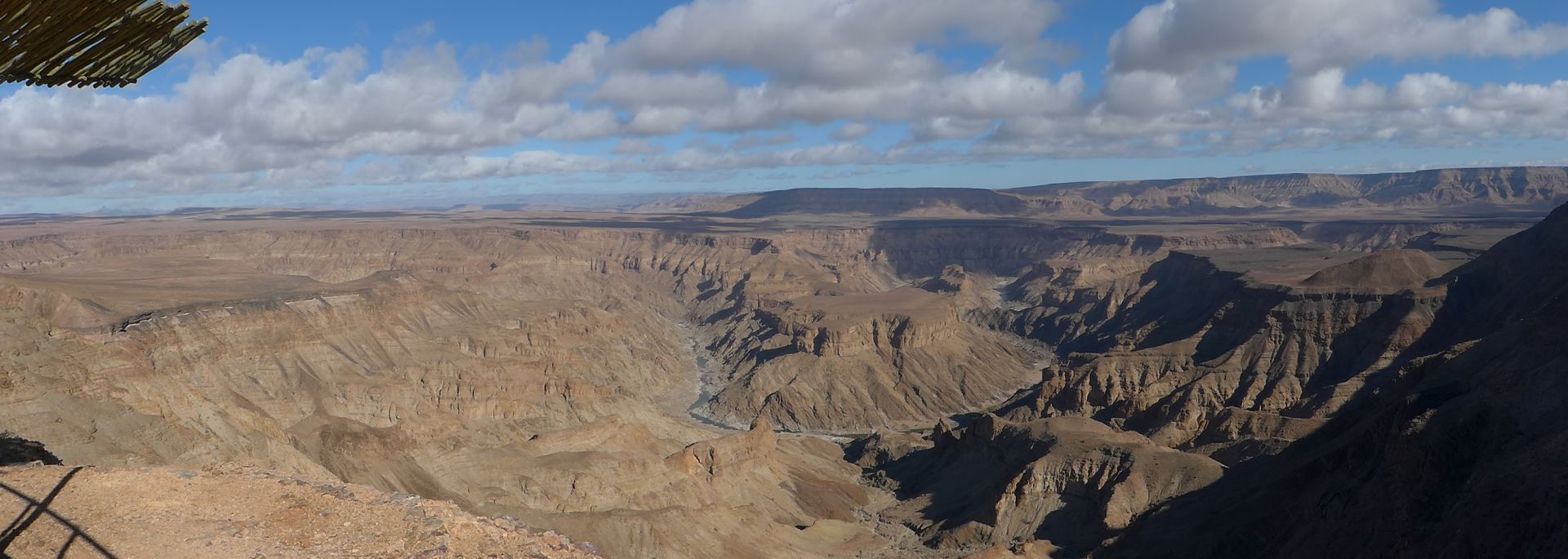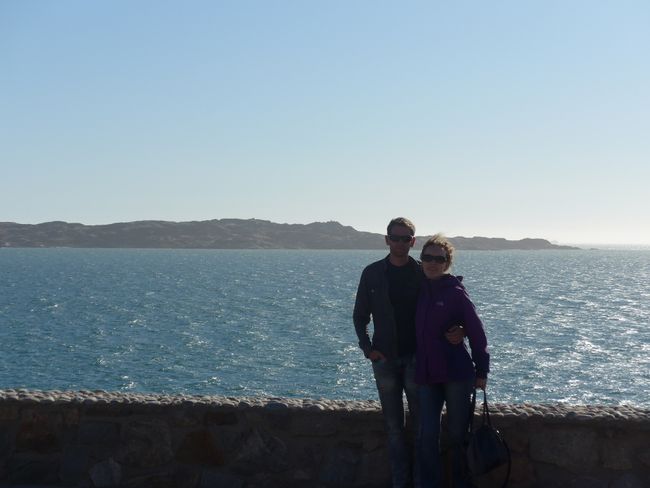Nile Cruise: Aswan to Luxor (Egypt Part 4)
Weşandin: 14.04.2018
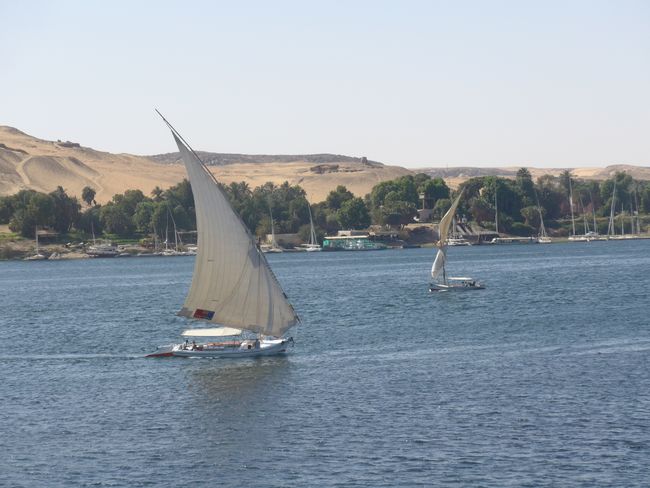
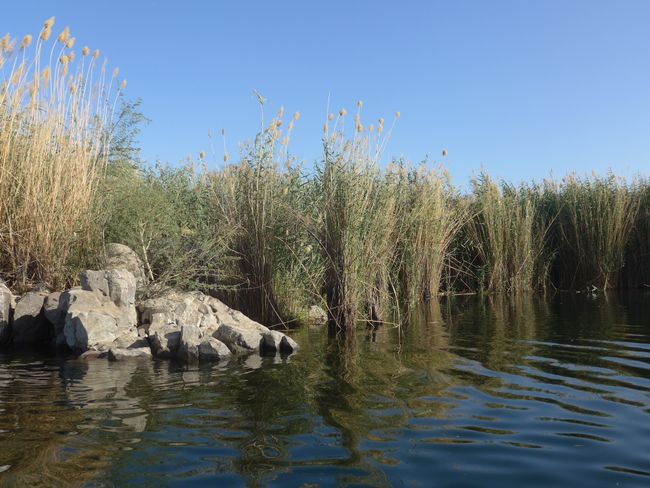
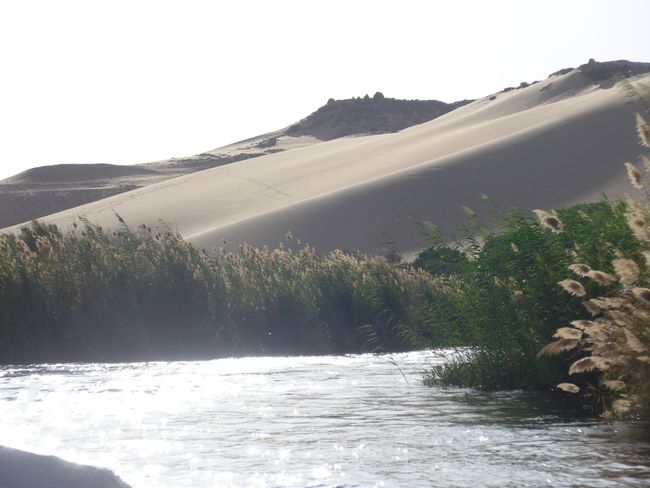
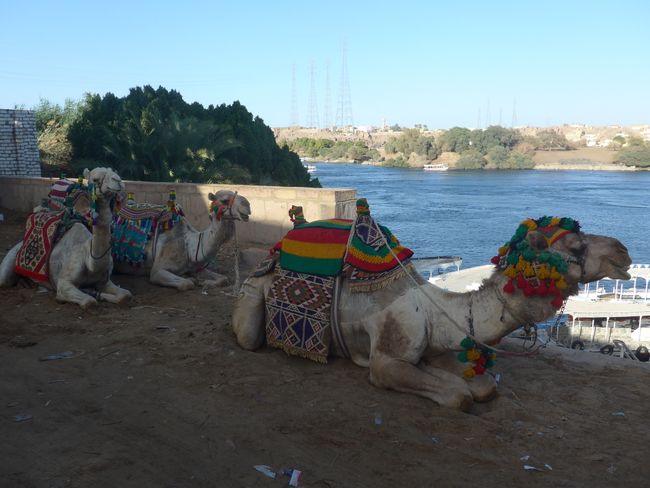
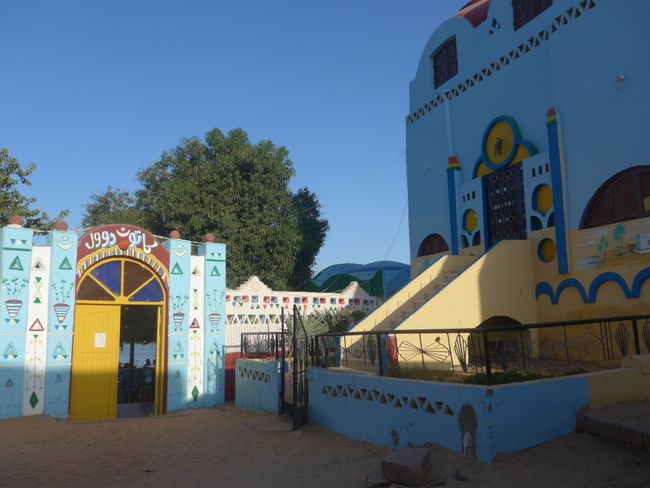
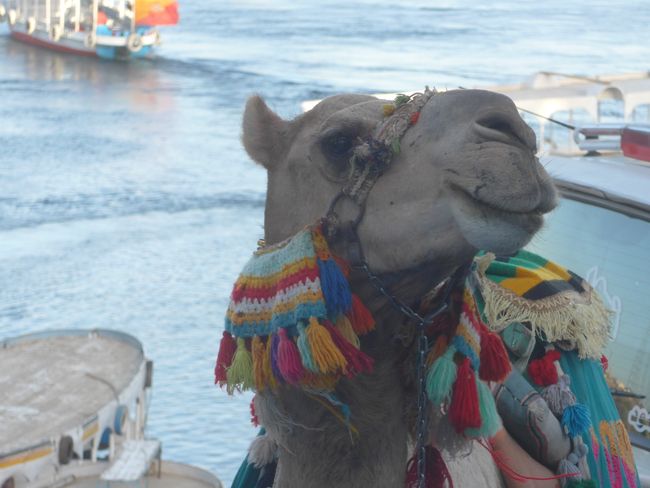
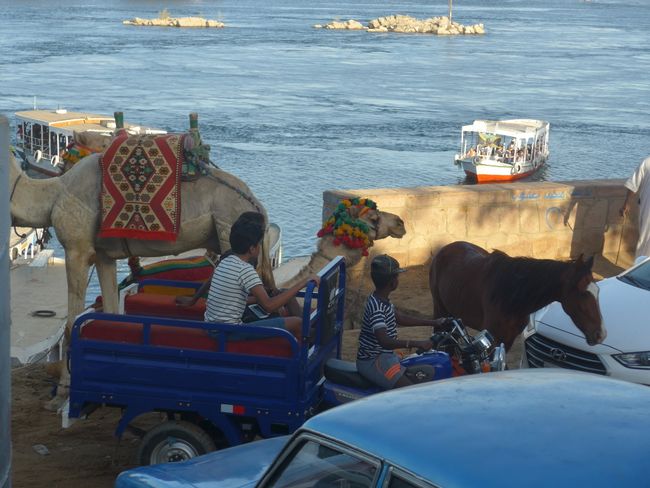
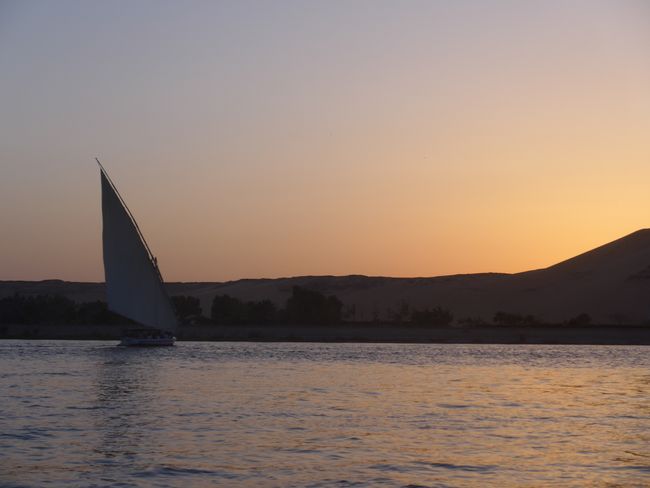
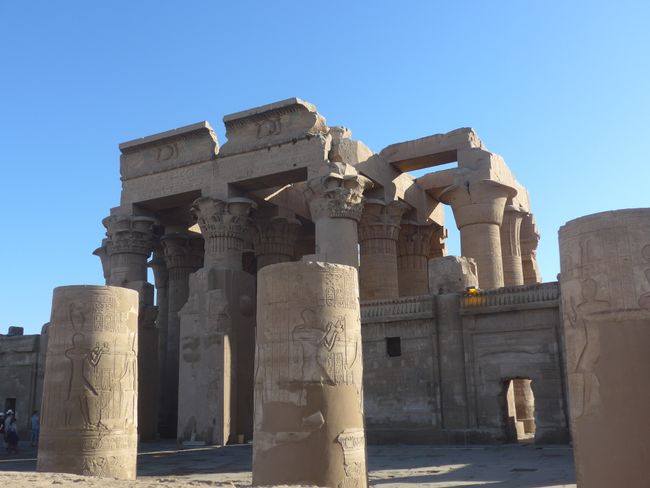
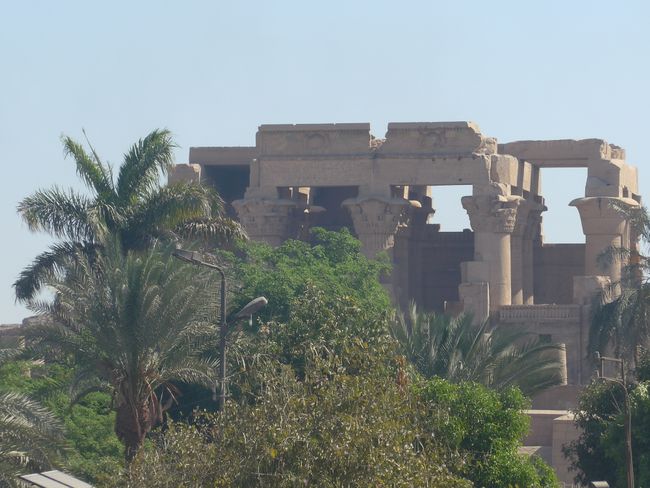
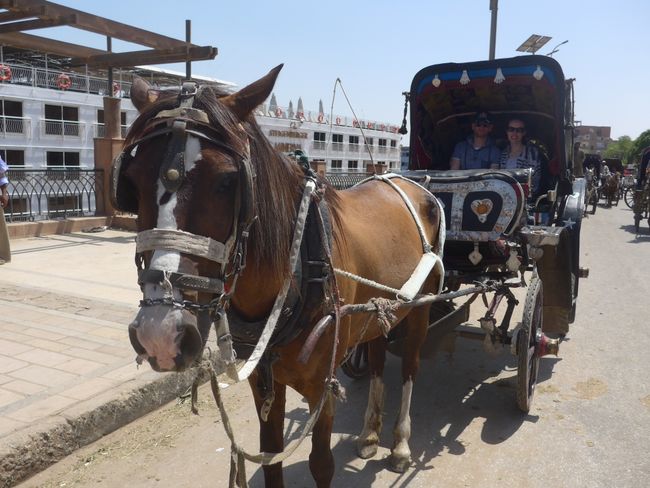
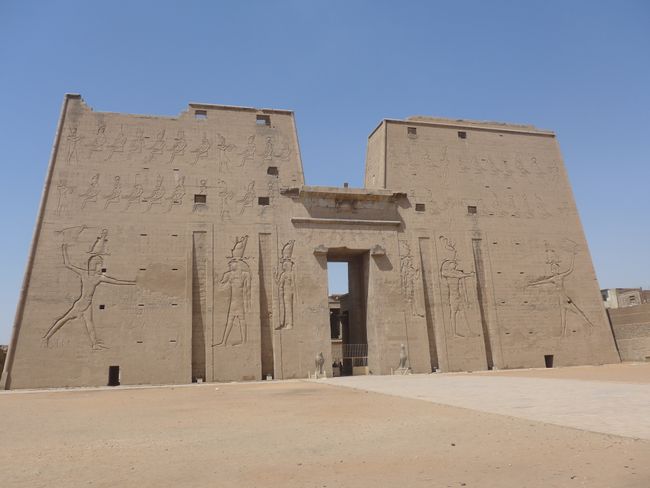
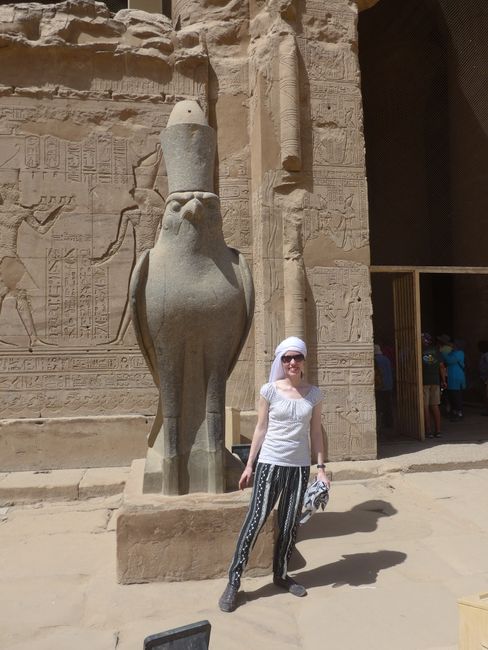
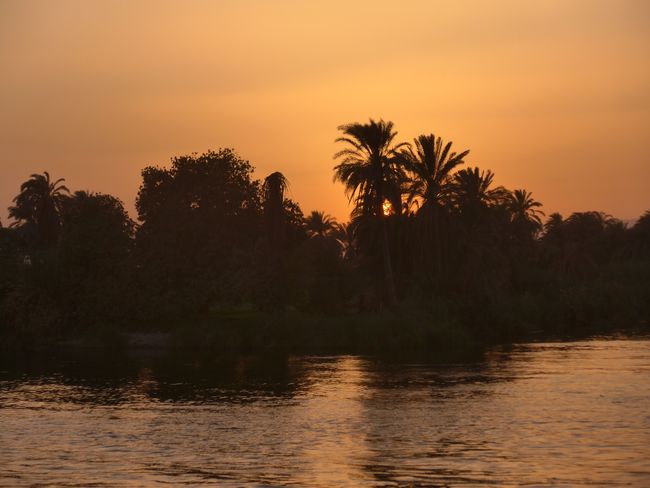
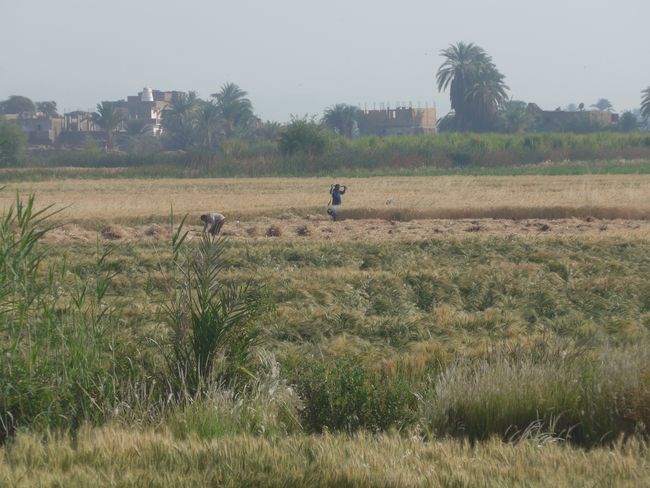
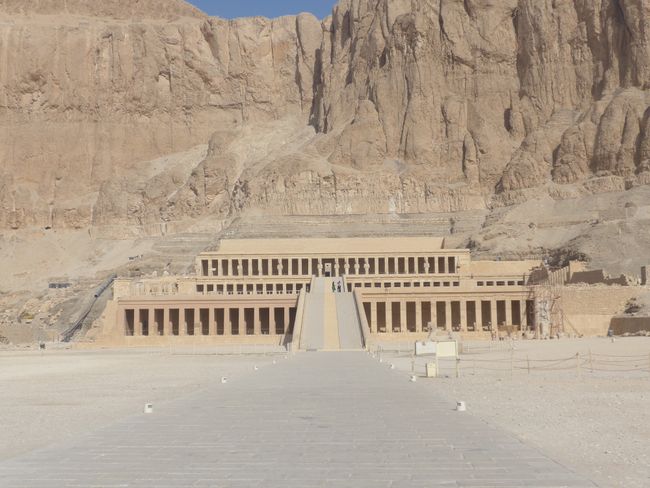
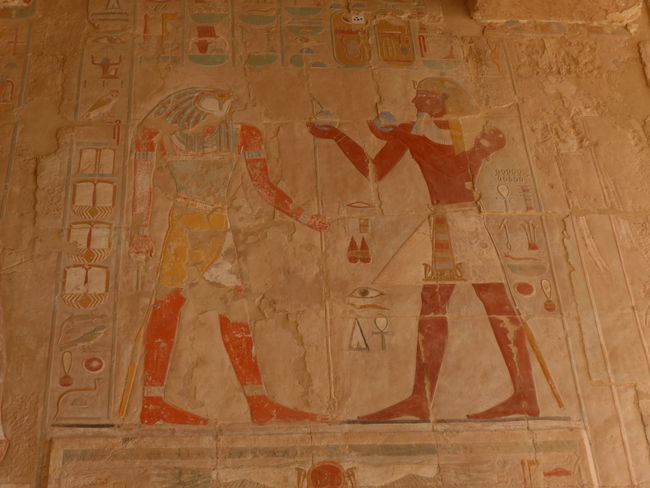
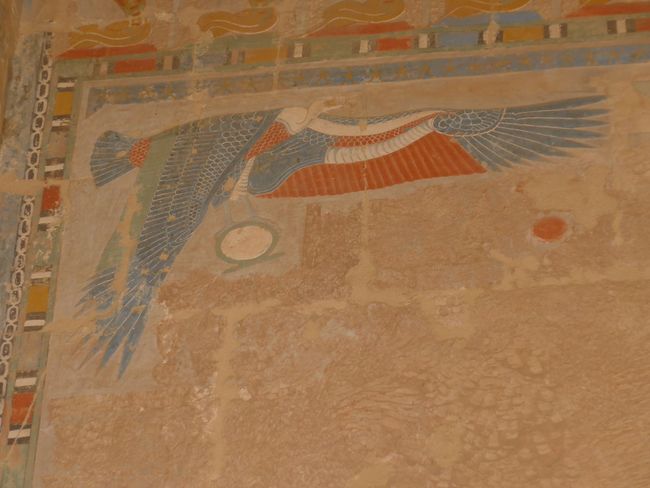
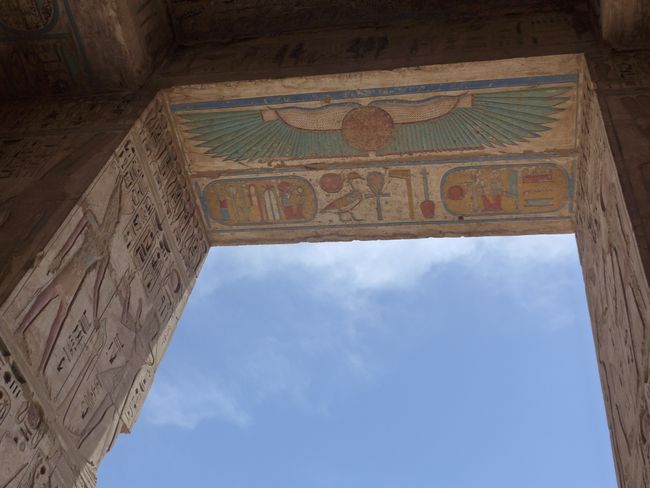
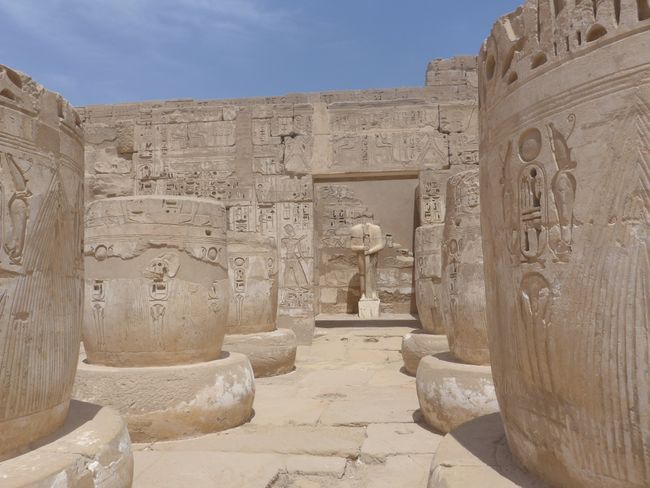
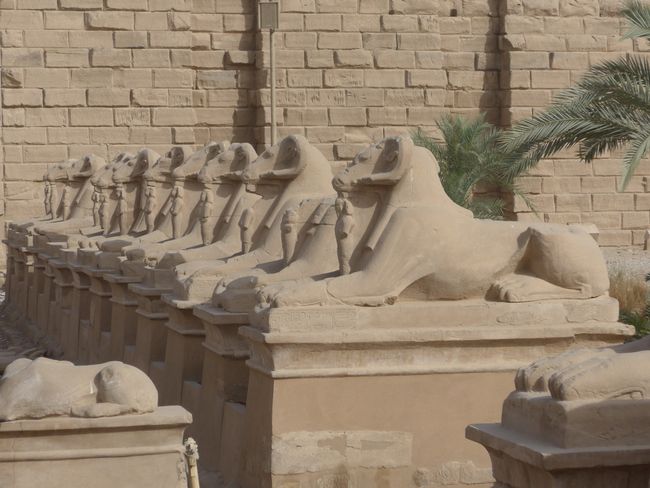
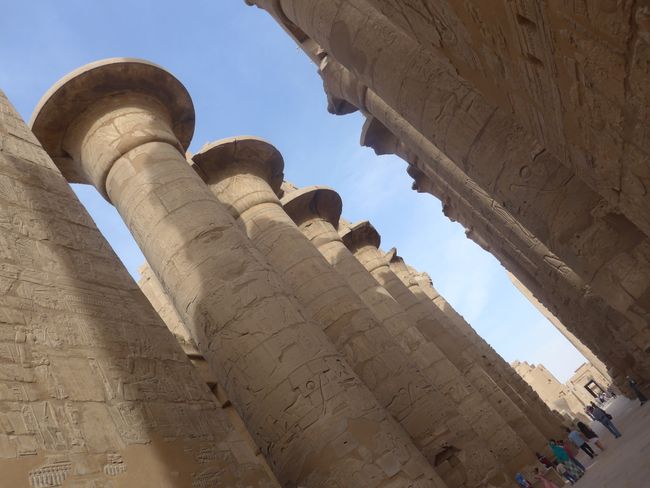
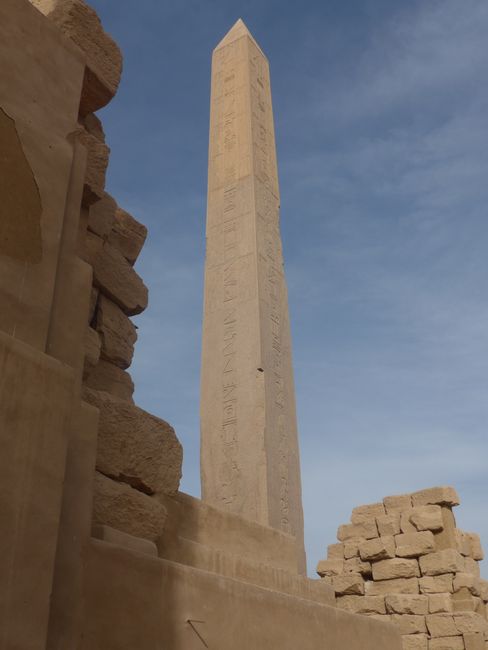
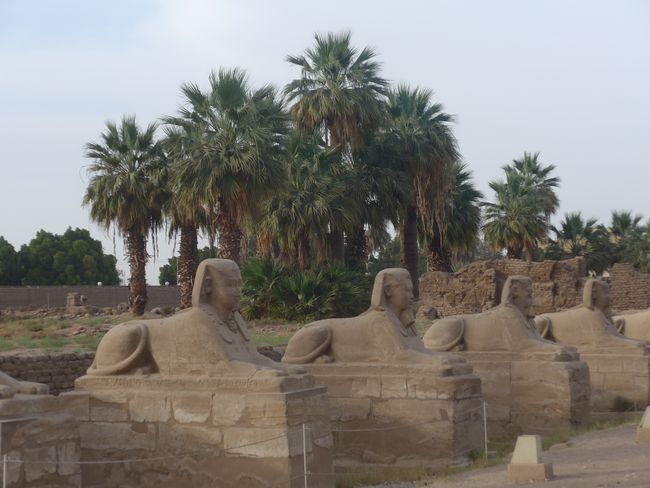
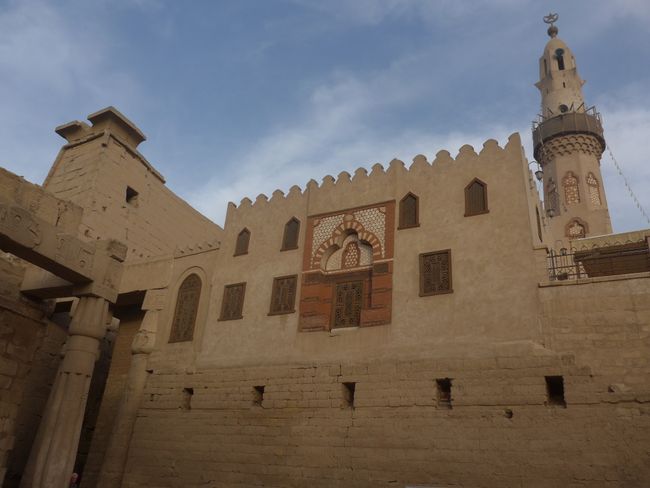
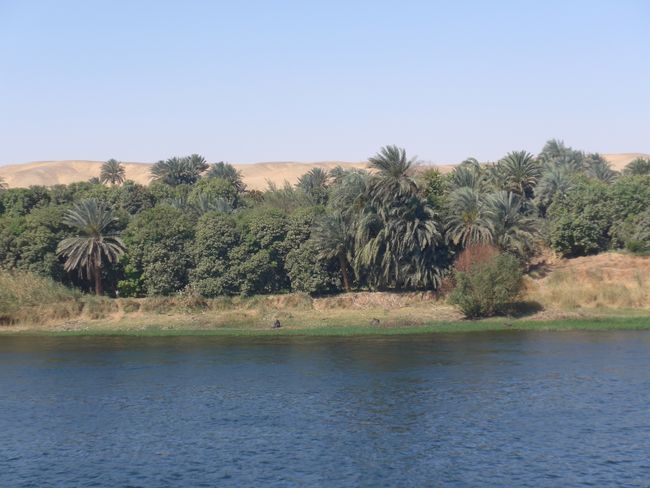
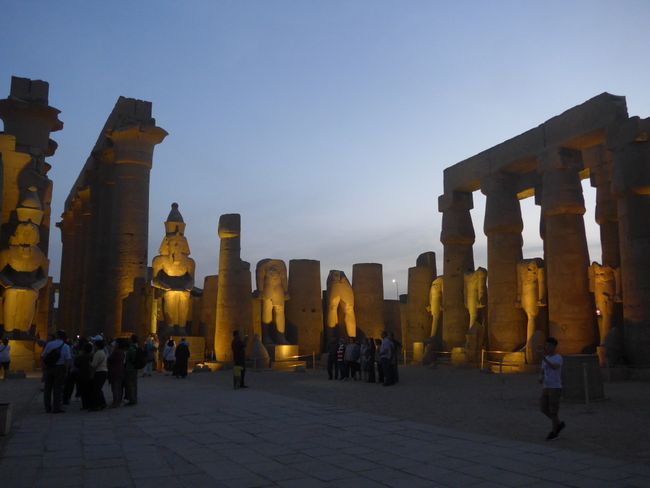
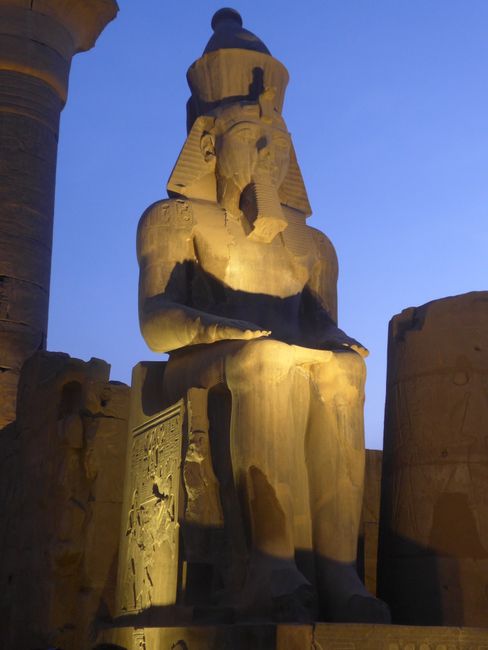
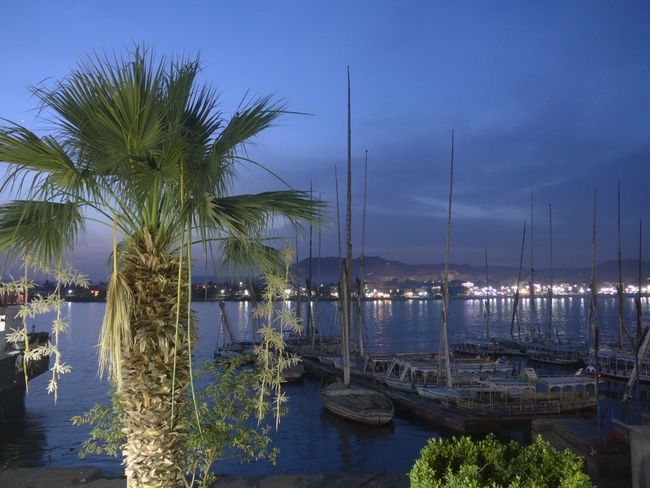
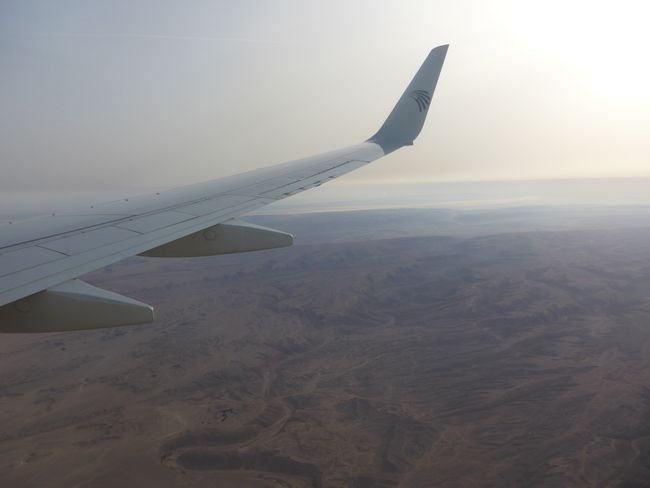
Subscribe to Newsletter
In Aswan, we boarded the 'Minerva' to embark on our three-day Nile cruise on this ship.
Before we departed on the big ship, however, there was an excursion with a Felucca, on which we sailed over the Nile in Aswan.
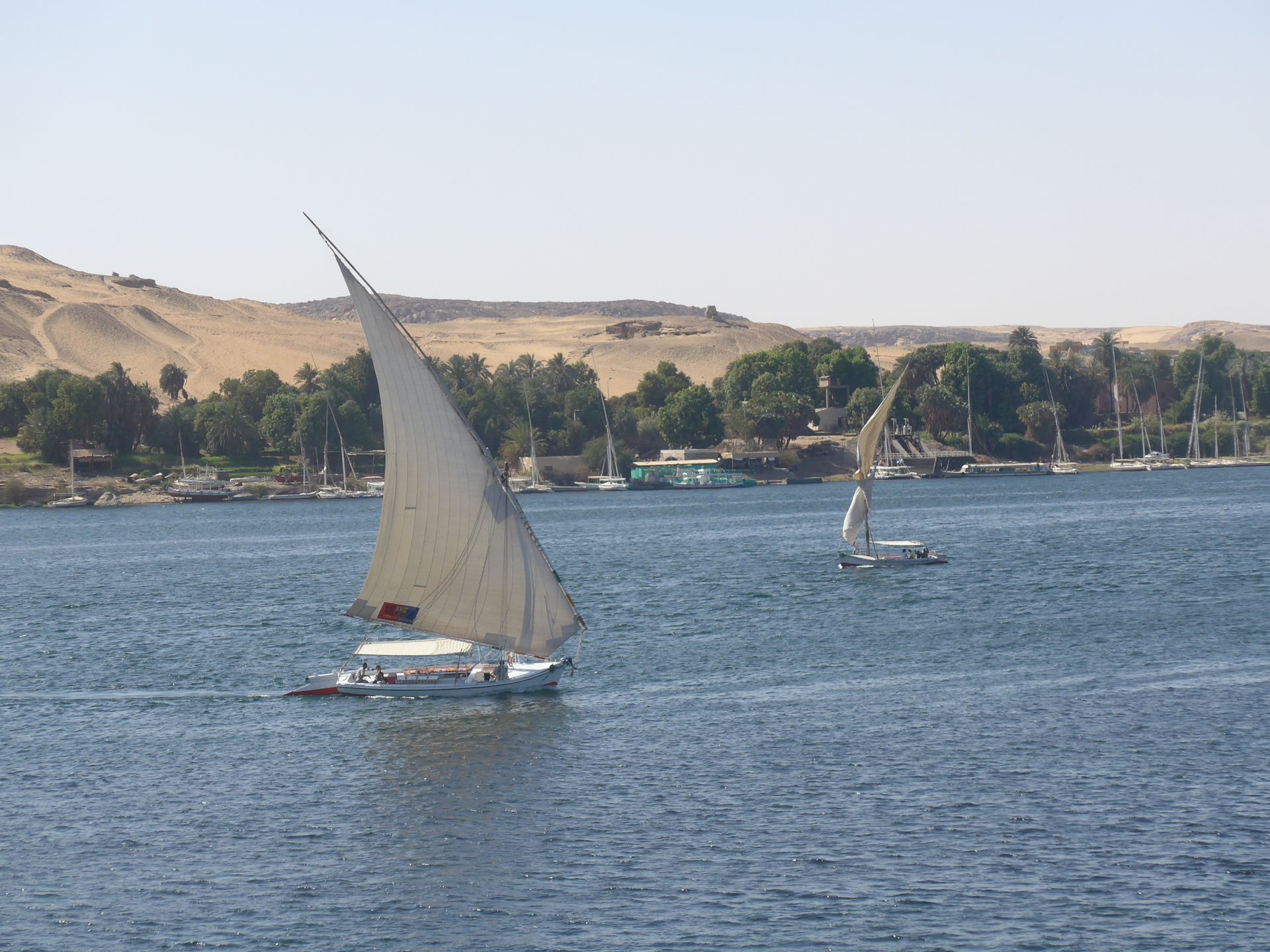
From there, we switched to a motorboat that took us through the cataract landscape of the Nile.
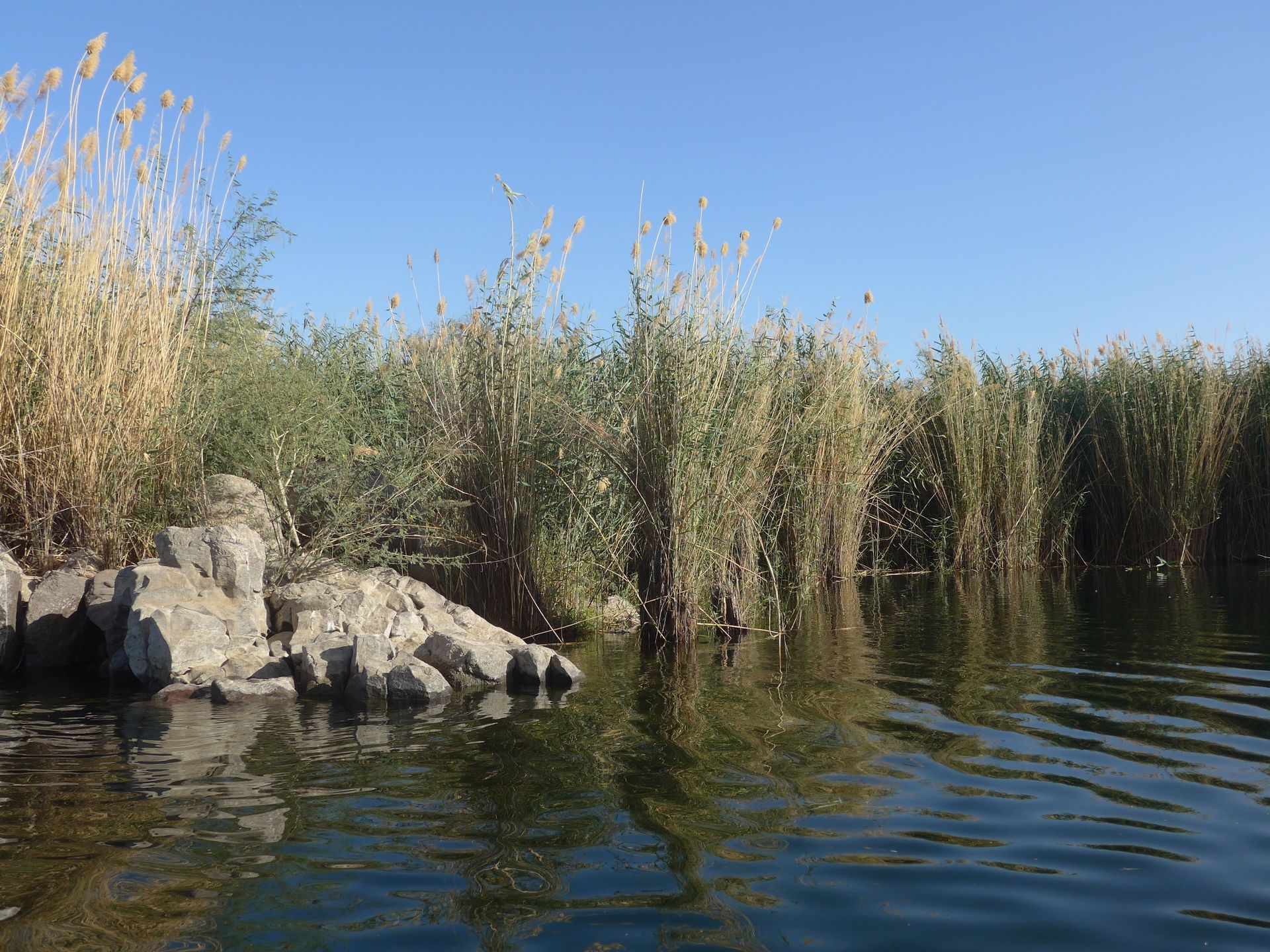
While turning, something got caught in the ship's propeller and the engine temporarily shut down. We thought we would have to be towed or swim, but then the boatman got it running again.

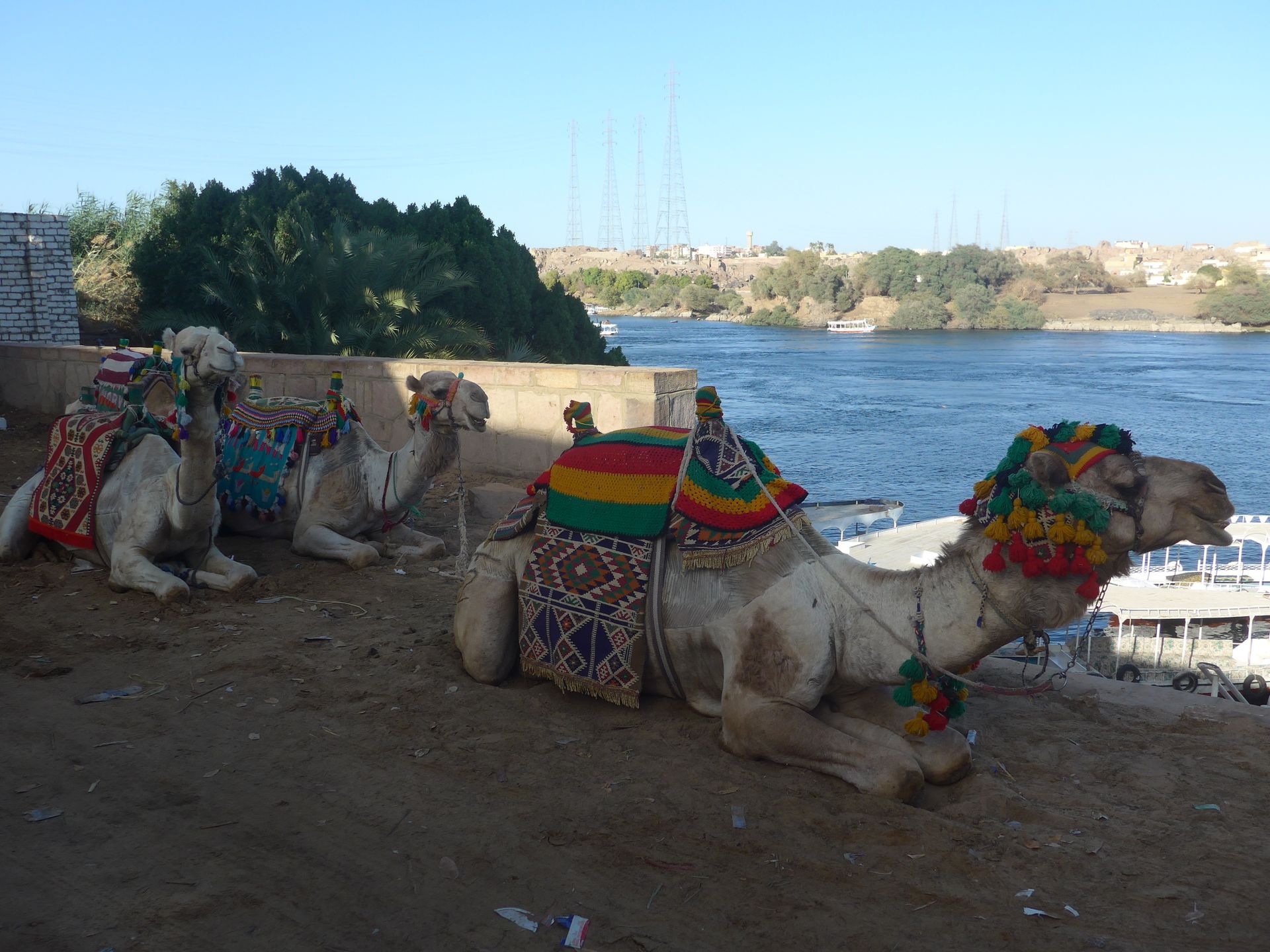
Suddenly, a woman grabbed my arm and held my hand tightly while she painted henna on me. Saying 'no' unfortunately didn't help, and her grip was very tight. Besides, I didn't want a line across my hand, so I only got my hand free after she finished a small flower. Of course, she wanted money for it... She had come to the wrong address with us: we didn't want to pay for something we didn't want. So we learned that we should take good care of our arms.

With a less pushy merchant, I then bought a scarf.

In the village, there were some nice houses and despite its small size, there was a traffic chaos caused by underage motorcyclists, camels, horses, and cars that seemed to be driving around haphazardly.
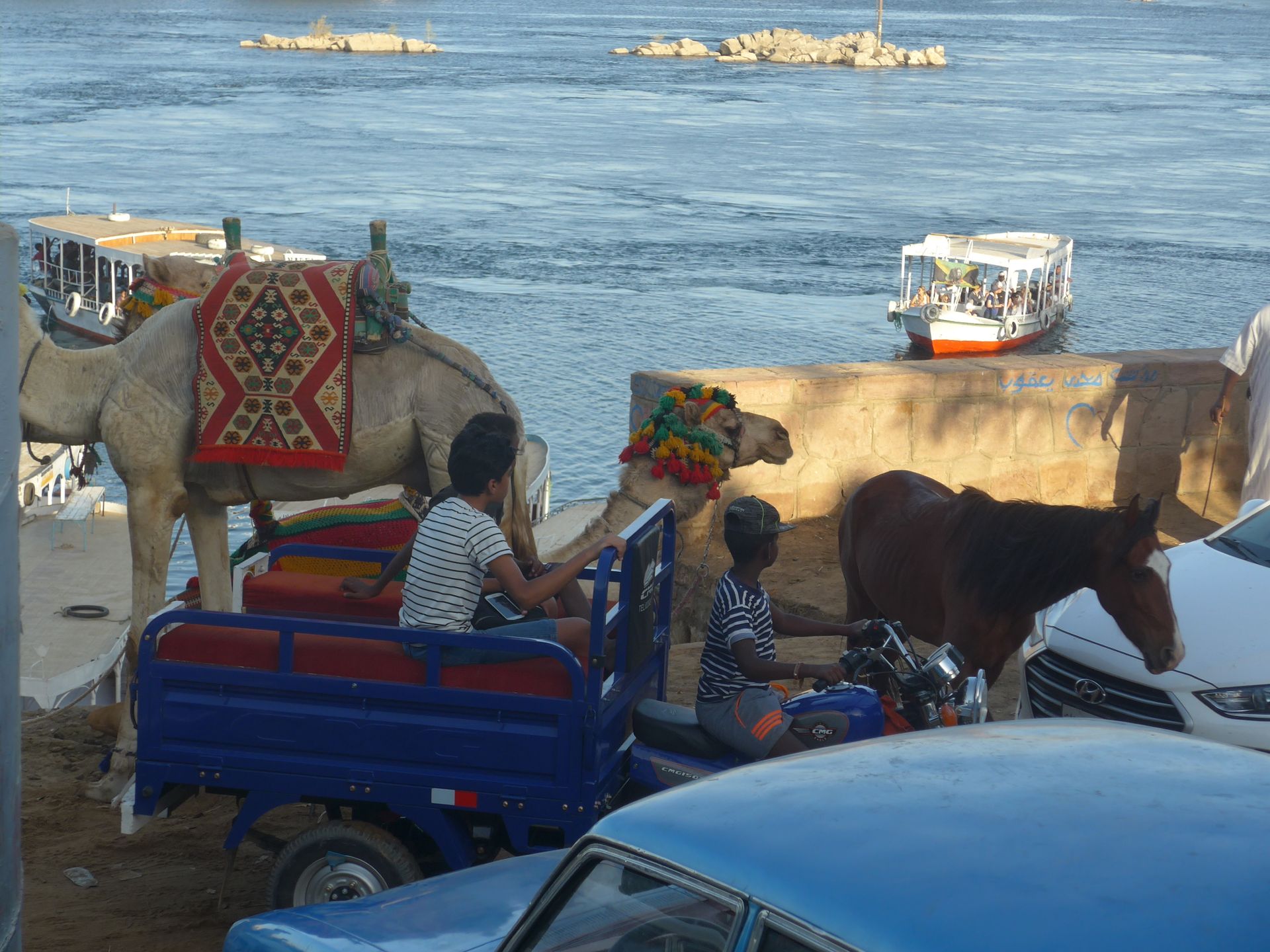
We returned to the ship at sunset.
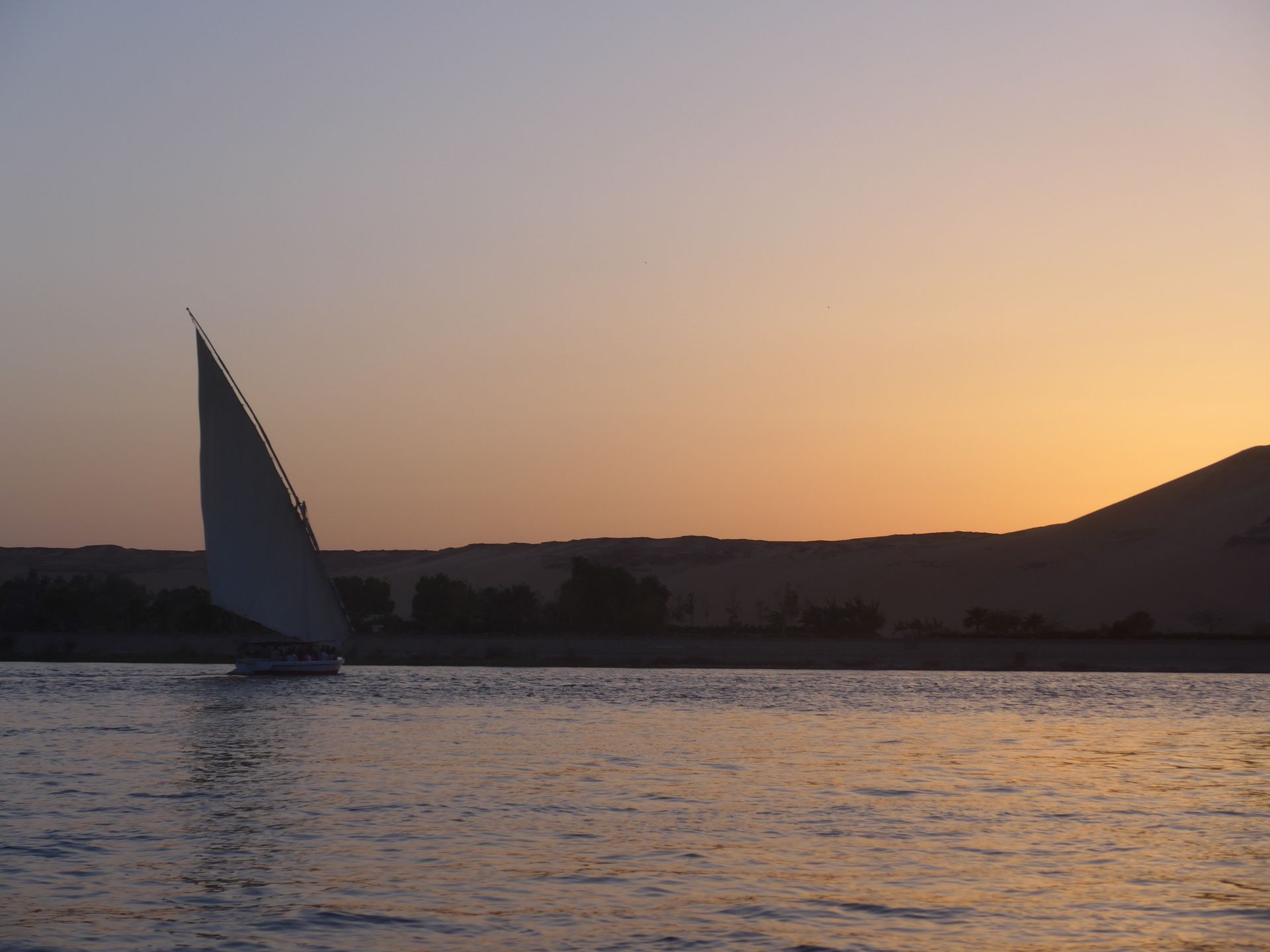
The first stop along the Nile the next morning was the 'Kom Ombo Temple', which we had to walk to from the 'Minerva', passing various merchants on the way.
Then we were able to visit the temple complex dedicated to Sobek (crocodile head) and Haroeris (falcon head).
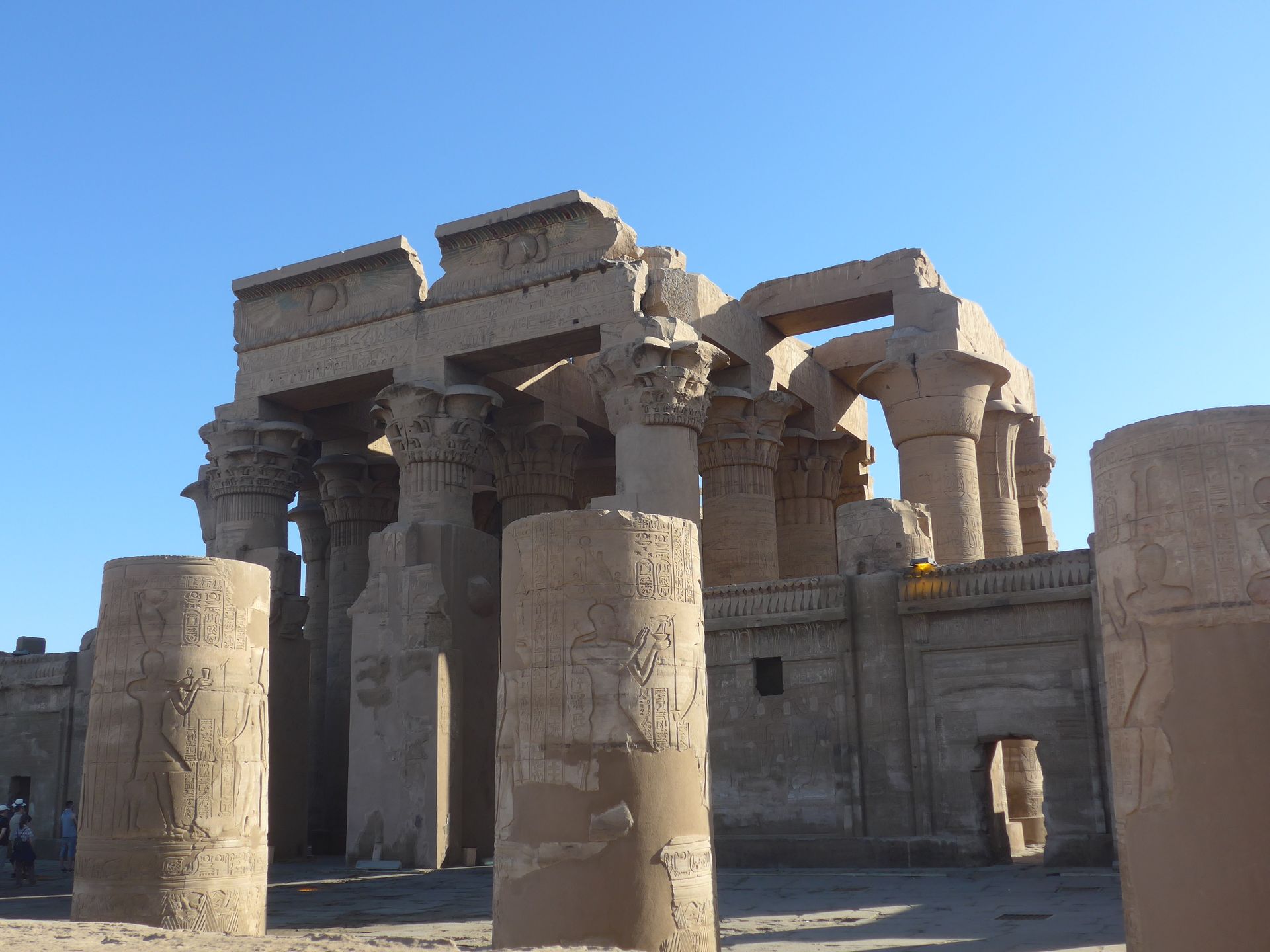
Presumably, 'sacred' crocodiles were kept there, which were mummified and buried after their death. In an adjacent museum, you could admire these mummies (but unfortunately not take photos). Nile crocodiles can reach an impressive size...

Nile cruise
In the afternoon, we arrived in Edfu. We were picked up by a carriage that took us to the Horus Temple. As advised by our tour guide, we declined any demands for tips, as he had already paid for it (which did not stop our coachman from asking for more from us).
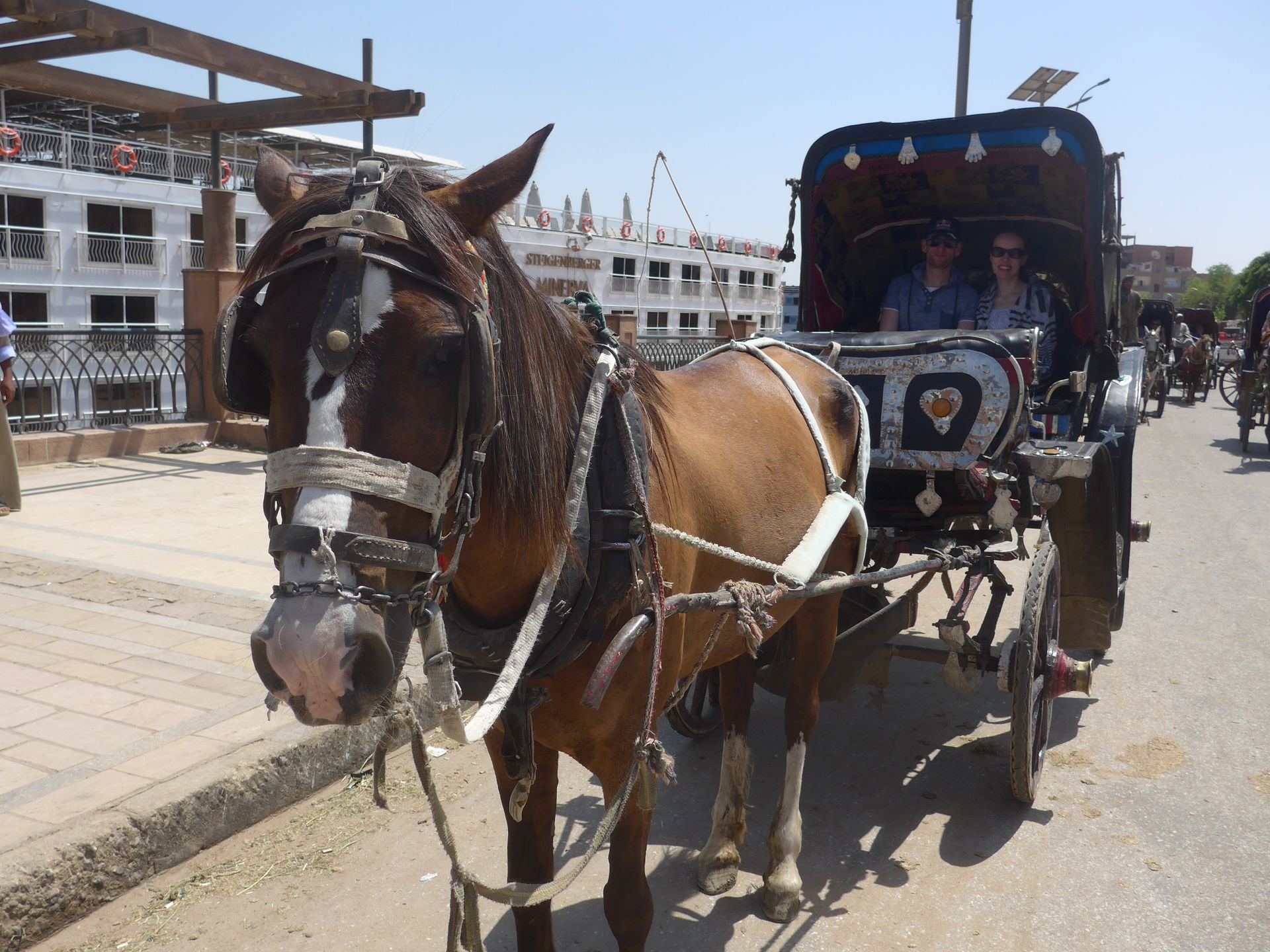
our carriage to Edfu
Before arriving at the temple, we were swarmed by merchants who wouldn't leave the tourists alone.
Once everyone from the tour group was finally there, we followed our tour guide into the temple and temporarily escaped the merchants.
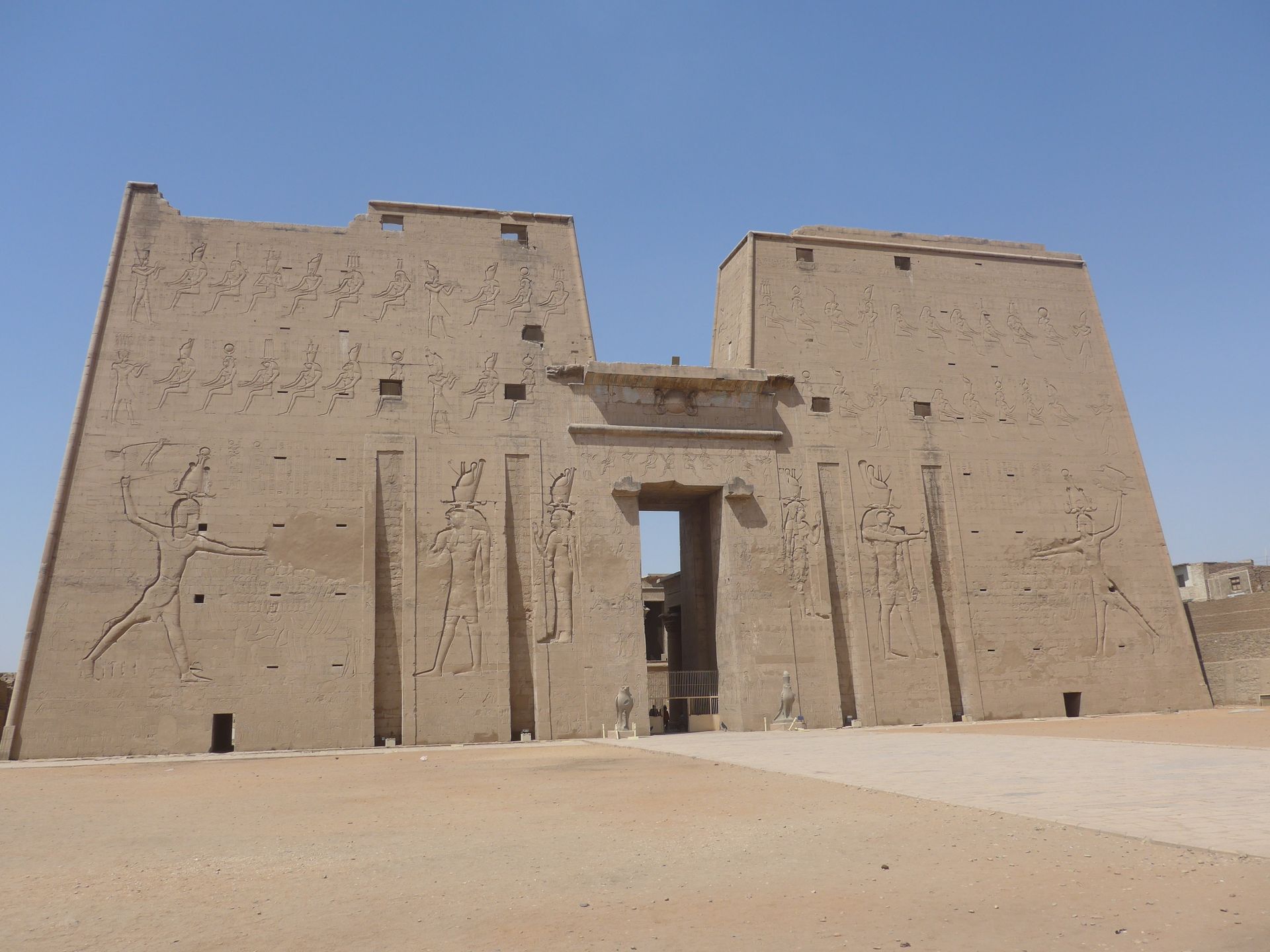
Pylon of the Horus Temple
In the temple, there was a 'comic' depicting the story of Horus's victory over his uncle Set. The pictures gradually immortalized the battle and ultimately the defeat of the 'evil uncle', who was portrayed as a small hippopotamus.

Horus
On the way back to the carriages, we barely managed to escape the merchants (nowhere else were they as pushy as here) and even managed to shake off the increasingly persistent demands for tips from the coachman. In many places, the merchants were friendly and much less intrusive, but here we were relieved when we finally returned to the ship.
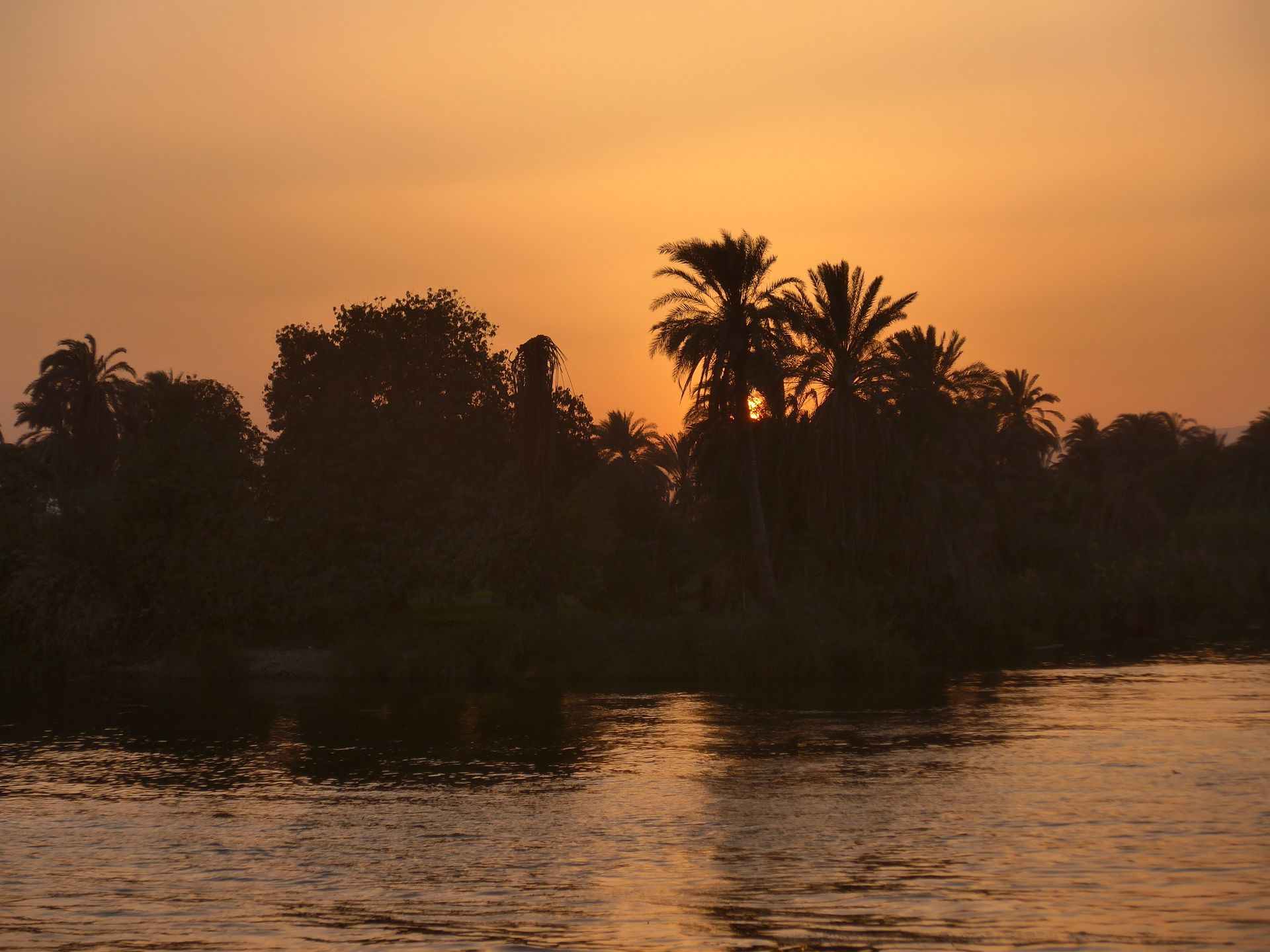
We reached Luxor late in the evening and anchored on the east bank of the Nile. Early the next morning, we set off by bus to Thebes West. The journey took us past fields where grain was still being harvested by hand and with a scythe.

Our first destination was the Terrace Temple of Hatshepsut.

Hatshepsut was probably the only female pharaoh and was usually depicted as male.
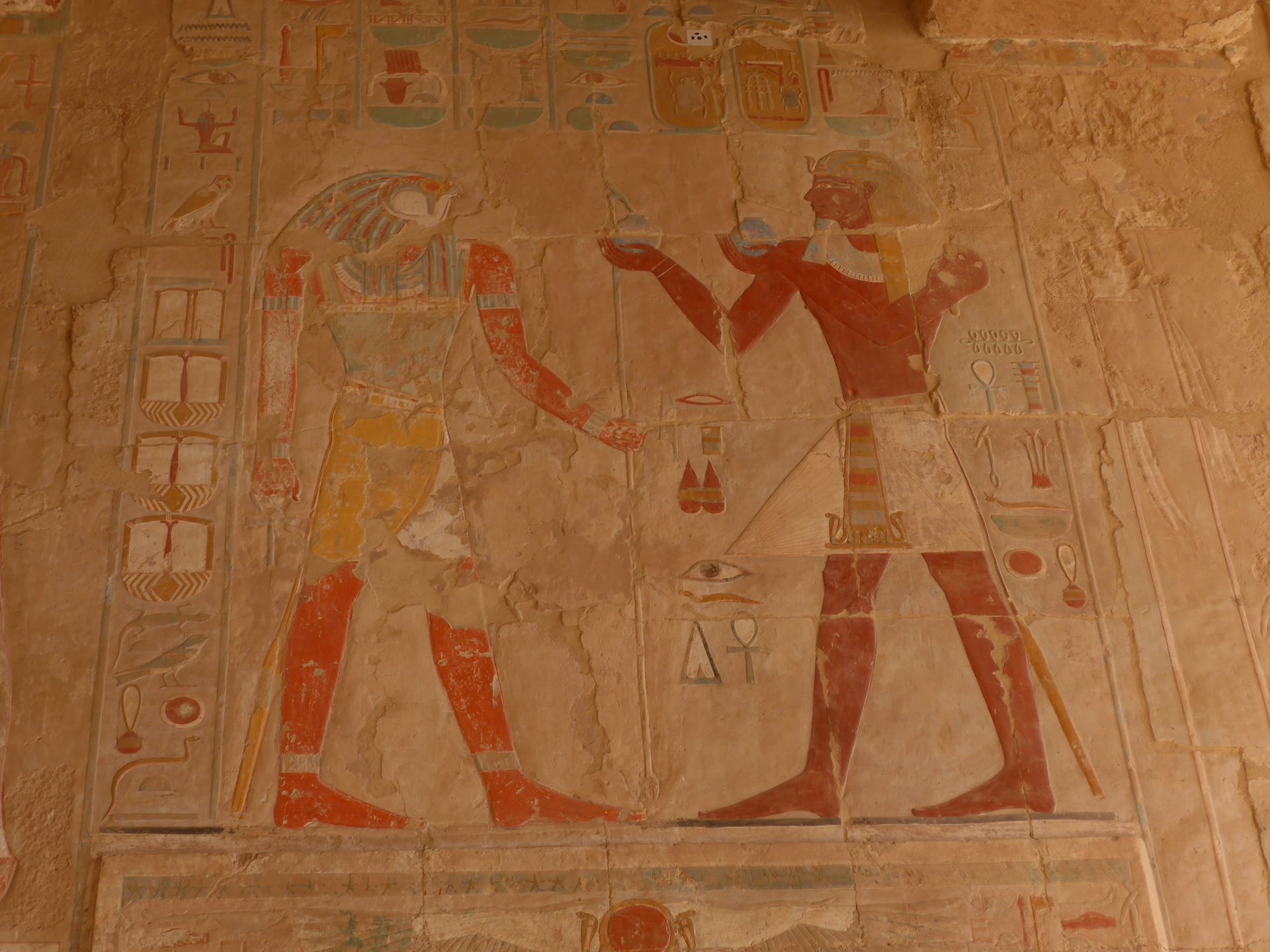
Her successors had many images of her later chiseled away to erase the memory of the hated female predecessor.
In the temple, there were impressive reliefs with colors dating back to ancient Egypt.
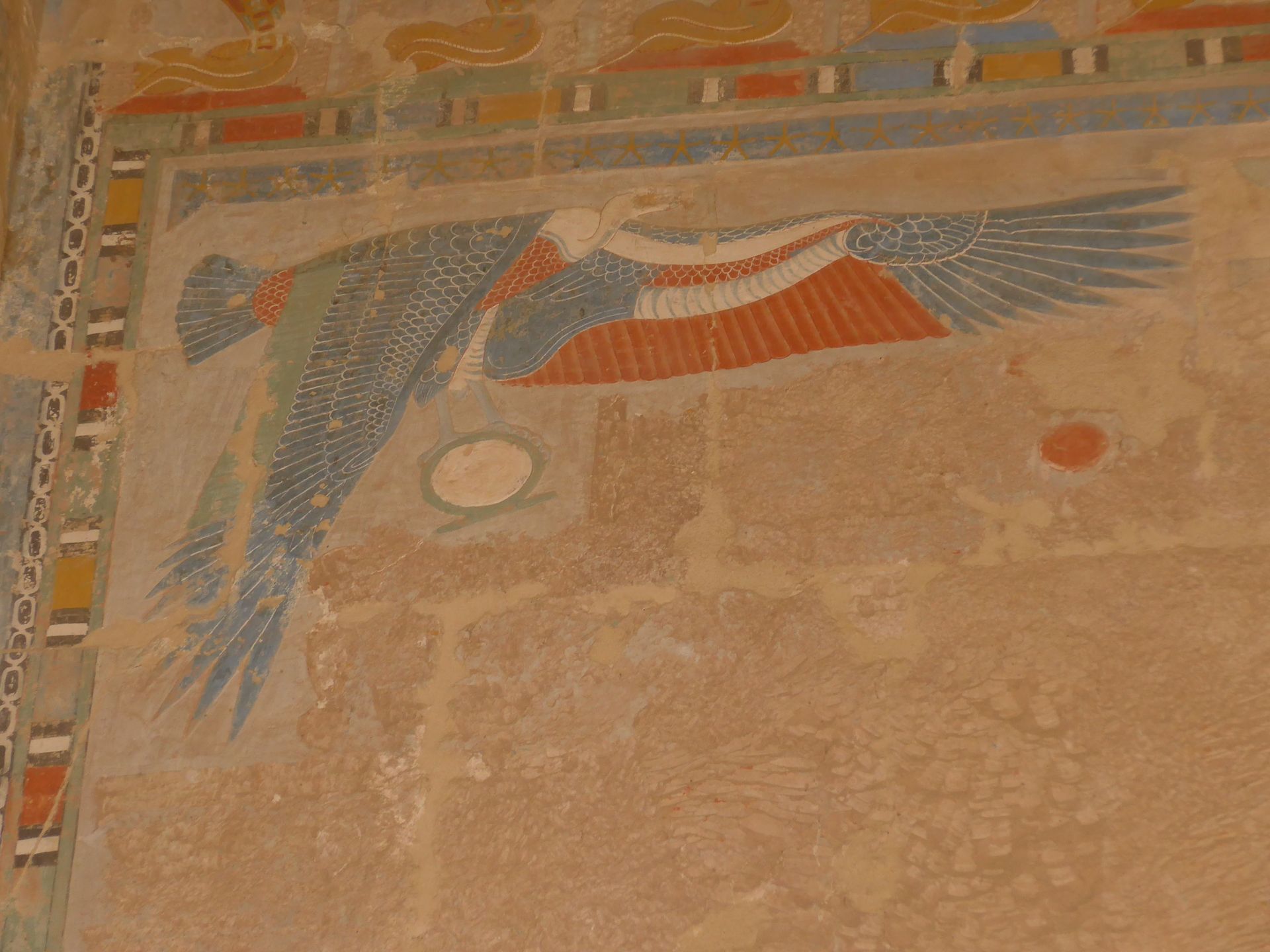
Afterwards, we went to the 'Valley of the Kings', where we visited the tombs of Ramses IV, Ramses III, and Tausert & Setnakht. The latter was a bit further away, but we were almost alone there and could take our time.
In the tombs, you were only allowed to take photos for a fee of 300 Egyptian pounds (about 15 euros), so we limited ourselves to viewing...

Gate in the Hapu Temple
Our tour guide also made an additional stop at the Hapu Temple, which was not originally part of the program. But we were glad to have the opportunity to see it, as both the reliefs and paintings, as well as the preserved pillars and parts of the buildings, were beautiful.
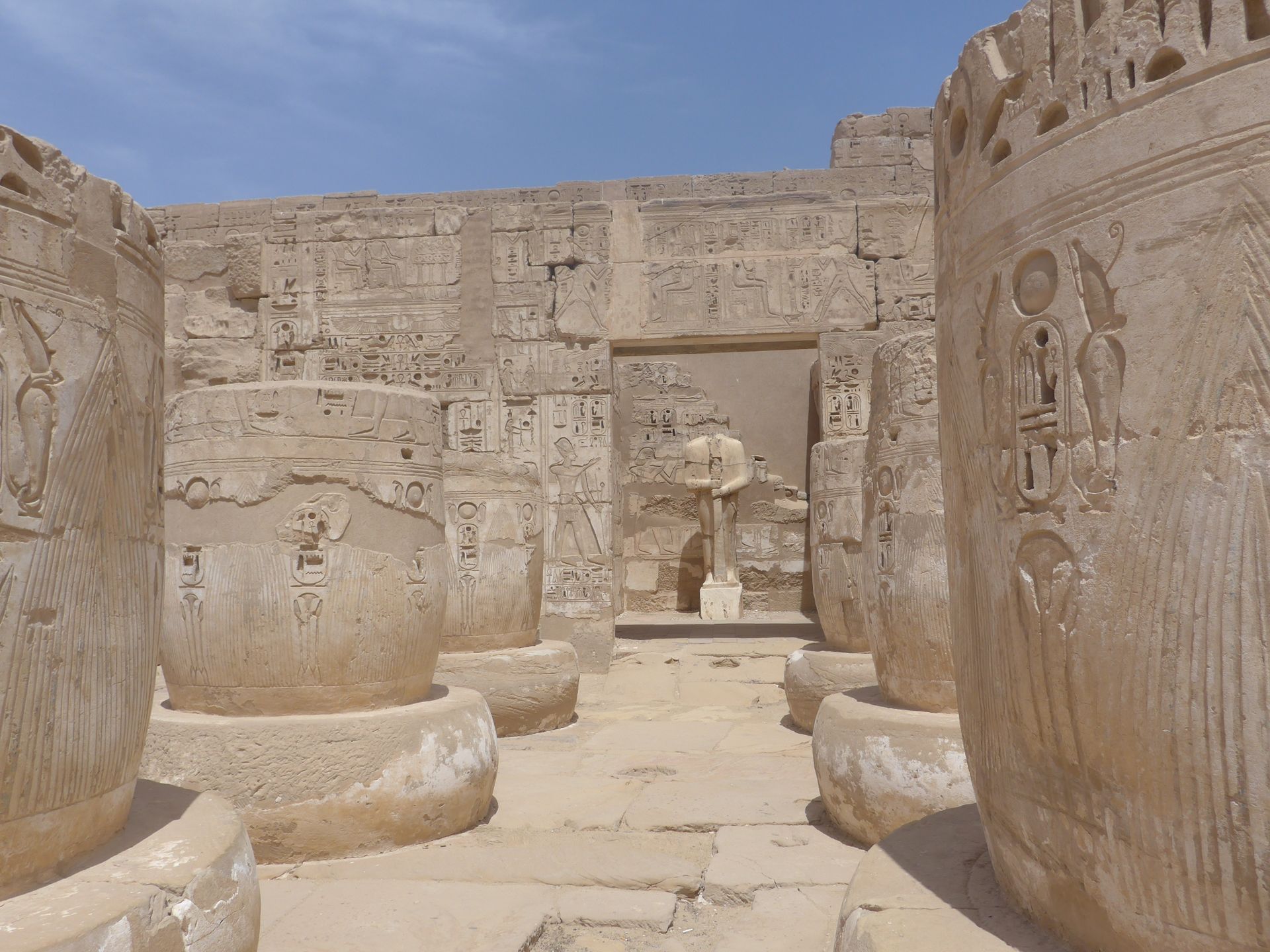
Hall of columns in the Hapu Temple
Since the bridge we had come across was about 10 km away, we returned from the west bank of the Nile by motorboat and were back on the ship just in time for lunch.
In the afternoon, we then set off for the temple complexes on the east bank:
First, we went to the Karnak Temple, which had a unique feature: a hall with 134 columns.

Hall of columns in the Karnak Temple
You could also see three obelisks, one of which was broken on the ground. The obelisk of Hatshepsut had been walled off in the meantime to hide it from view.

Obelisk of Hatshepsut
Afterwards, we continued to the Luxor Temple, which is currently undergoing a construction project to reconnect it with the Karnak Temple via a Sphinx Avenue.
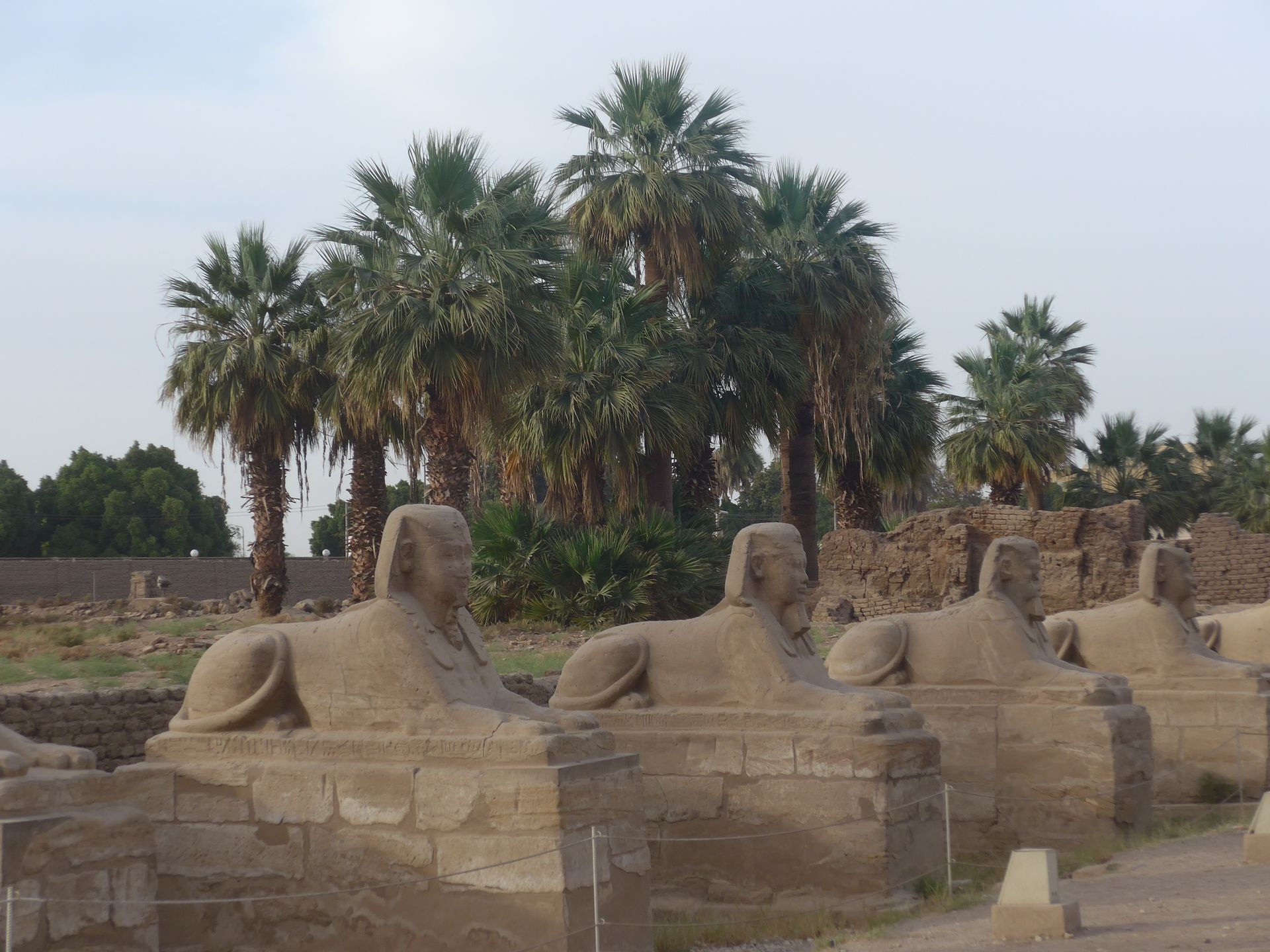
Sphinx Avenue at the Luxor Temple
A mosque was built on the old temple grounds, as the temple had been buried. It has been preserved and is still used as a mosque.
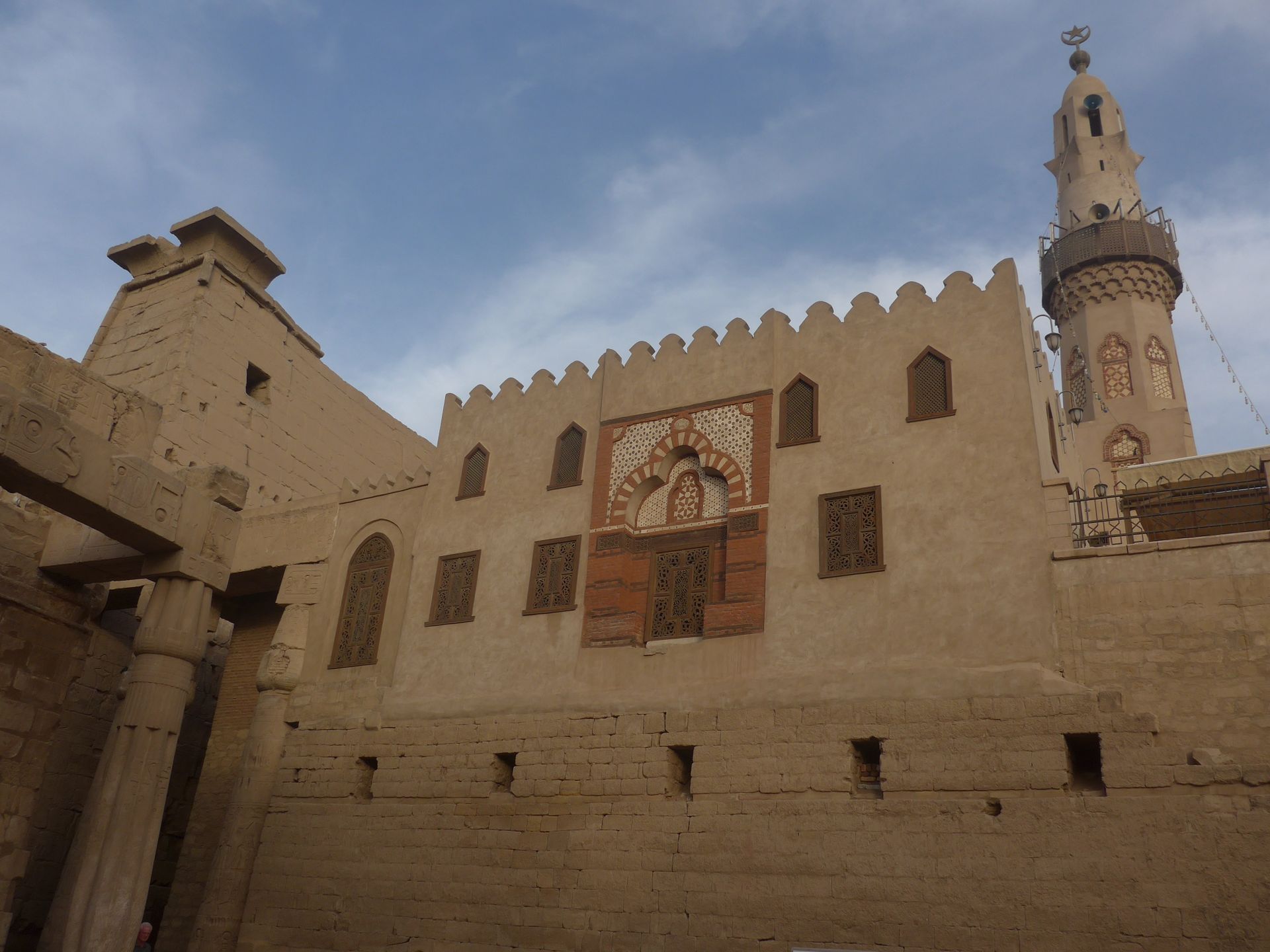
Below the mosque, there was also a church, which is no longer preserved.
Originally, we had planned to watch the sound and light show at the Karnak Temple in the evening. Since time was tight, we decided against it and stayed until sunset at the Luxor Temple instead.

During the evening, the columns and statues were illuminated, allowing us to see them in a different light.
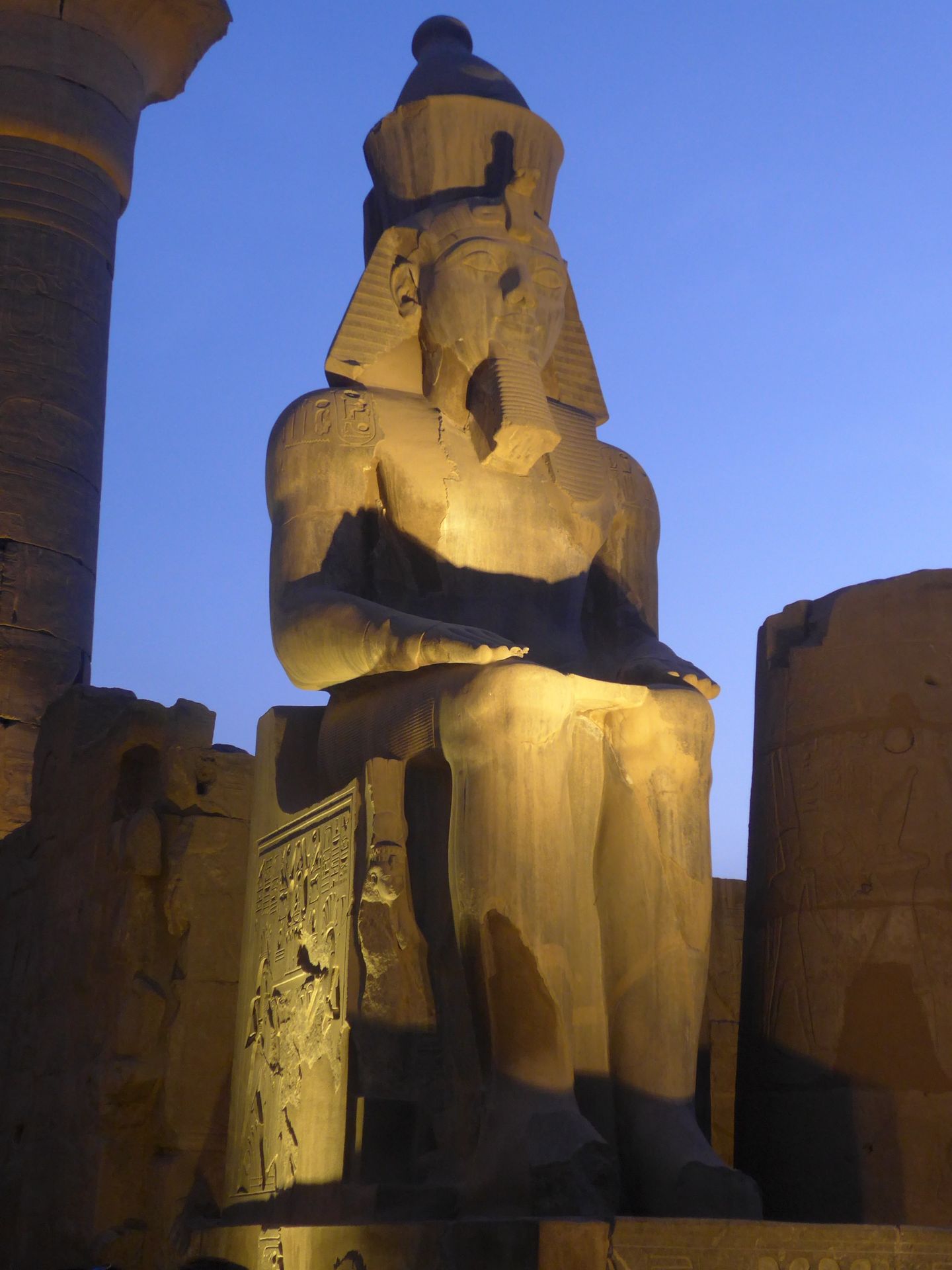
Statue of Ramses II
From the temple, we were able to walk to our ship in the evening, which was anchored nearby.
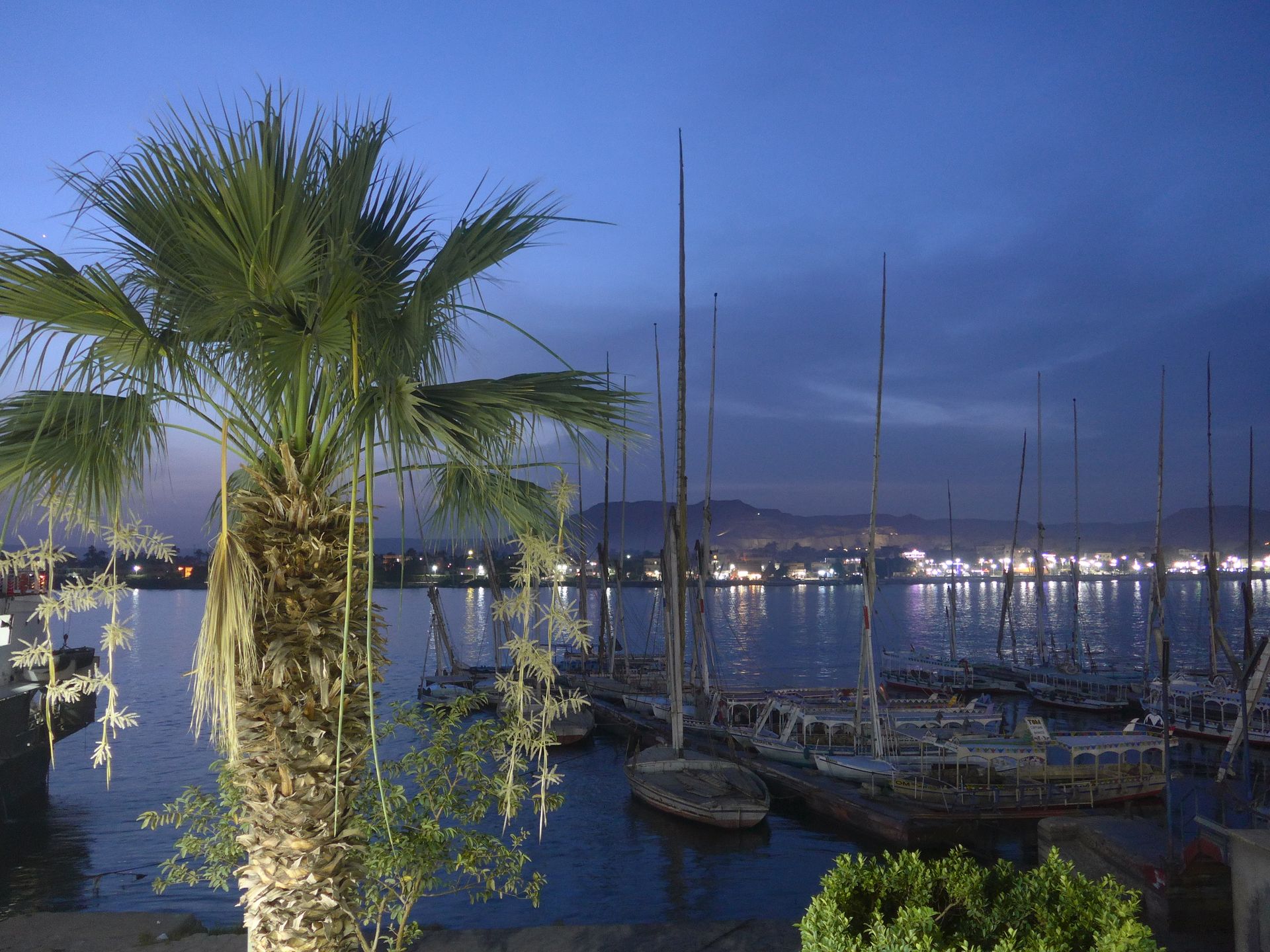
View from the promenade in Luxor
The next night, we had to get up early: The alarm went off at 3:15 am so that we could catch our flight back to Frankfurt via Cairo in time.
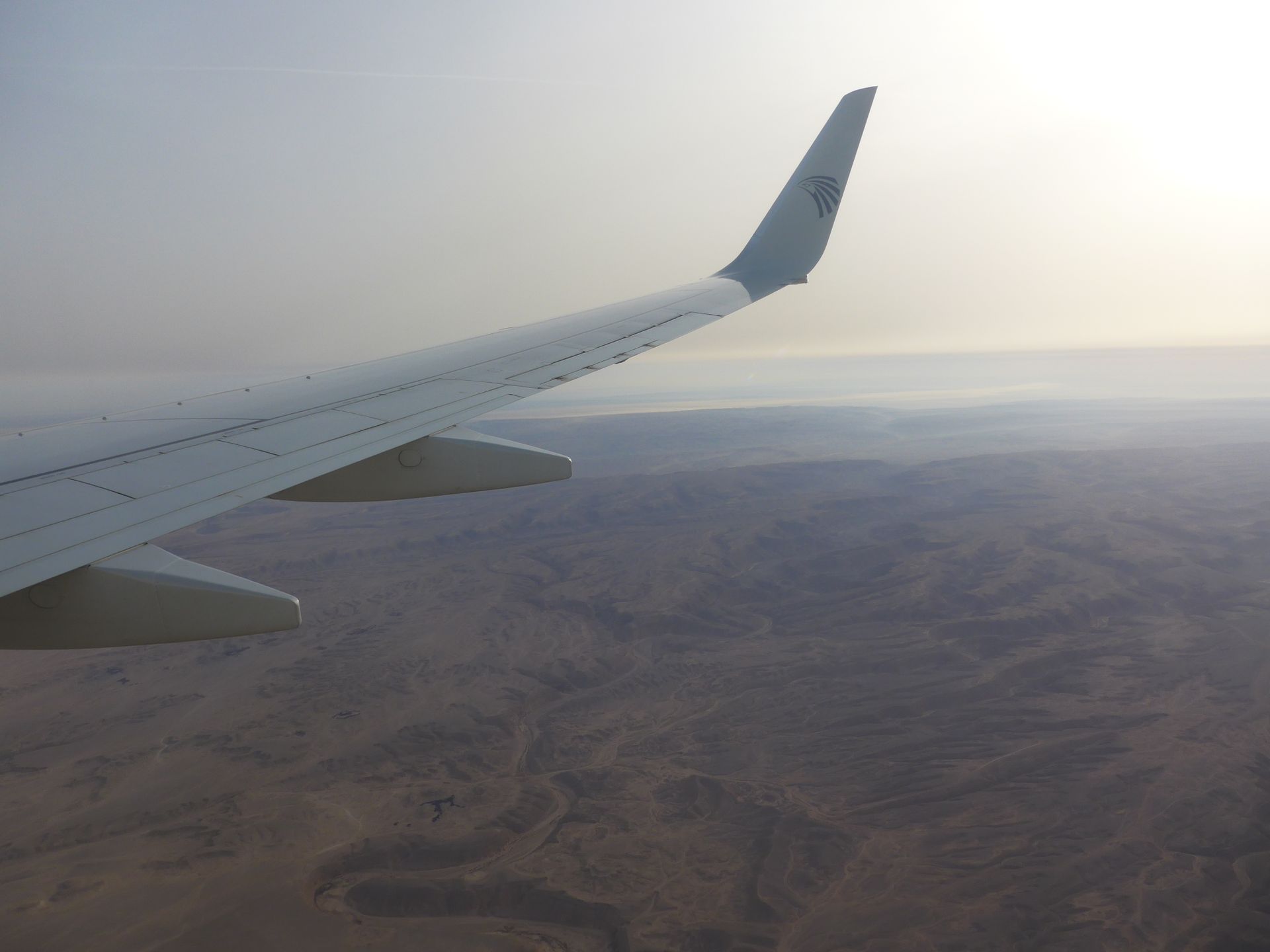
Subscribe to Newsletter
Bersiv
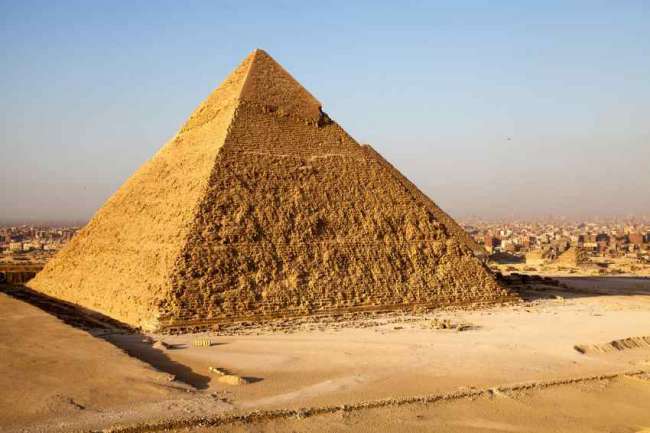
Raporên rêwîtiyê Misr
